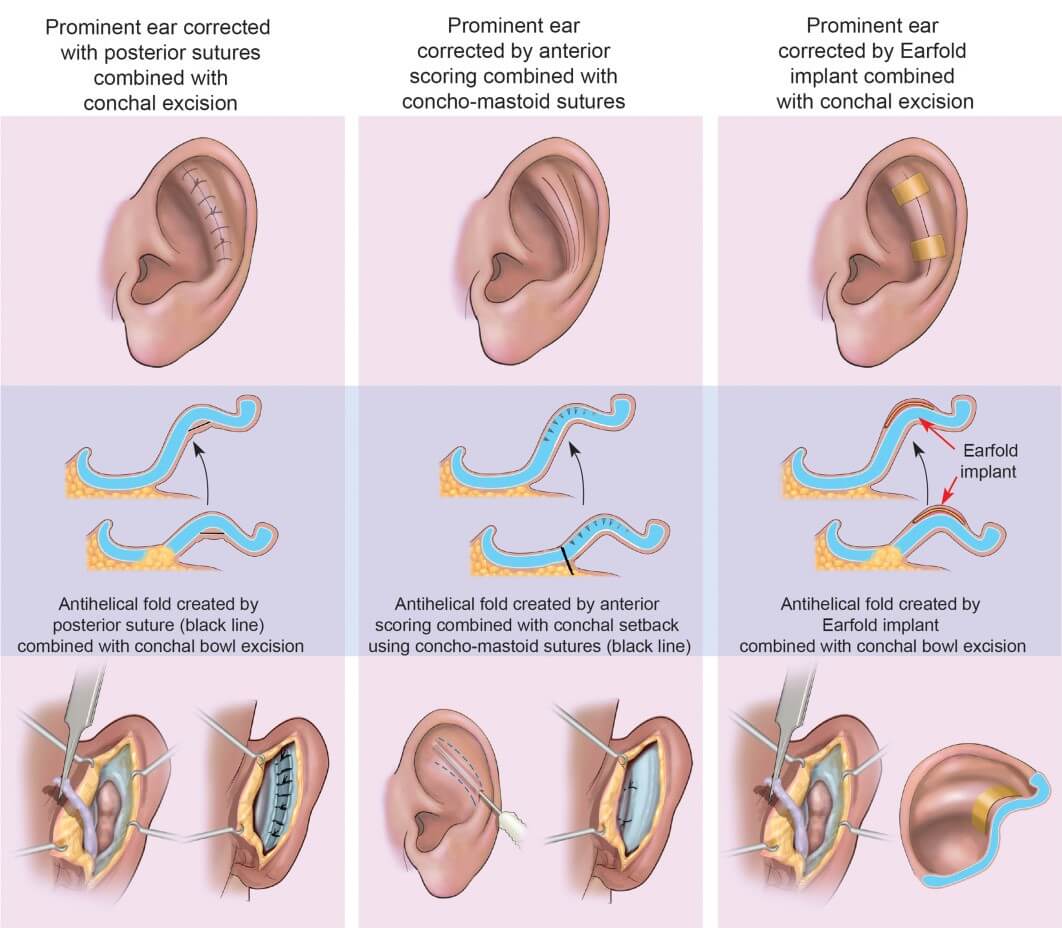
- Aesthetic Surgery
- Facial Surgery
- Ear Surgery
Ear Surgery
A defect in the ear structure that is present at birth or that becomes apparent with development can be corrected by otoplasty. This procedure can also treat misshapen ears caused by injury.
Otoplasty creates a more natural shape while bringing balance and proportion to the ears and face.
Age for ear surgery
Generally, from 4.5 years old
Type of procedure:
- reduction of concha
- increase the antihelical fold
- reduction of earlobe

Information about the Procedure
Correction of protruding ears uses surgical techniques to create or increase the antihelical fold (just inside the rim of the ear) and to reduce enlarged conchal cartilage (the largest and deepest concavity of the external ear). Incisions for otoplasty are generally made on the back surface of the ear. When incisions are necessary on the front of the ear, they are made within its folds to hide them. Internal, no removable sutures are used to create and secure the newly shaped cartilage in place, and reduction the earlobe volume by external incision
After the procedure:
Recovery after ear reconstruction depends on the type of surgery you have. Some ear reconstruction requires a hospital stay, or you may be able to go home the same day.
After surgery, you may have:
- Pain
- Swelling
- Bleeding
- Itching
Do not sleep on your side where the ear was reconstructed. Try not to rub or place pressure on your ear. Consider wearing button-down shirts or shirts with loose-fitting collars.
Complication
- Asymmetry
- Bleeding (hematoma)
- Change in skin sensation
- Infection
- Pain, which may persist
- Poor wound healing
- Possibility of revisional surgery
- Skin contour irregularities
- Skin discoloration/swelling
- Unfavorable scarring
Results:
Ear surgery offers almost immediate results in cases of protruding ears, visible when the dressings that support the new shape of the ear during initial phases of healing are removed. With the ear permanently positioned closer to the head, surgical scars are either hidden behind the ear or well hidden within the natural creases of the ear.

